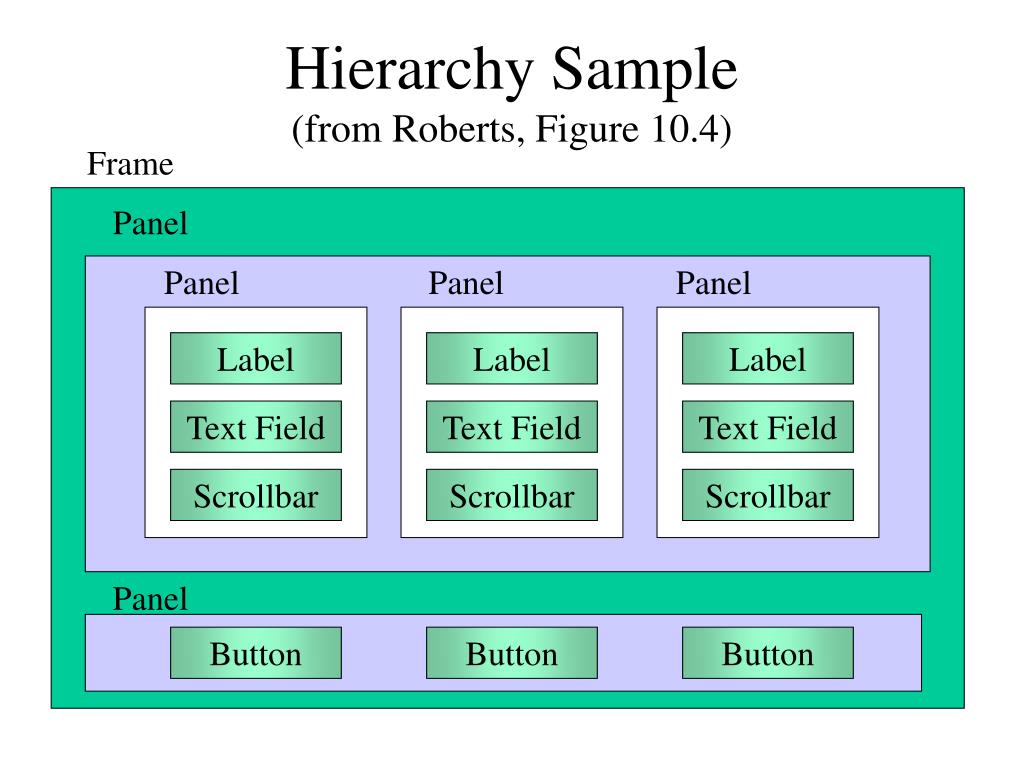


FlowLayout(int align, int hgap, int vgap) Creates a new FlowLayout object with the first argument as the alignment applied and the hgap -unit horizontal and v gap -unit vertical gap applied to the components. FlowLayout(int align) Creates a new FlowLayout object with the specified alignment and the default 5-unit horizontal and vertical gap applied to the components. FlowLayout Constructors FlowLayout() Creates a new FlowLayout object with the center alignment and 5-unit horizontal and vertical gap applied to the components by default. It has three constructors which are as listed below. This is how the FlowLayout manager works. Imagine how you type using a particular word editor. The buttons should be named 'Button 1', 'Button 2' and so on. It positions the components in a left to right and top to bottom manner, starting at the upper-lefthand corner. 7.4.1 The FlowLayout Manager The FlowLayout is the default manager for the Panel class and its subclasses, including the Applet class.

This can show up when you define a JPanel for drawing. Problem FlowLayout makes components as small as possible, and does not use their preferred size. Flow Layout Manager The Flow layout manager places items all on one row from left to right. When you want to add several components to a BorderLayout region, drop them into a FlowLayout panel and put that in the BorderLayout. Border Layout Manager This is the default layout manager. In this section, you'll learn about the first three layout managers. Multiple components in a BorderLayout region. AWT & Swing Layout Manager Classes, BorderLayout Manager, CardLayout Manager, FlowLayout Manager, GridBagLayout Manager, GridLayout Manager etc. You'll have to call this method for each component. This would be quite difficult and tedious to program if you have several Component objects within the Container object. public void setBounds(int x, int y, int width, int height) The method controls the position based on the arguments x and y, and the size based on the specified width and height. But then, you would have to position the elements manually with the use of the setBounds method of the Component class. void setLayout(LayoutManager mgr) If you prefer not to use any layout manager at all, you pass null as an argument to this method. The layout manager can be set using the setLayout method of the Container class.


 0 kommentar(er)
0 kommentar(er)
